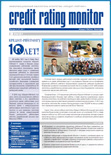Corporate Governance Rating Scale
|
Rating |
Definition |
|
uaАcg |
Corporate governance is characterized by the highest level. The risks concerned with the corporate governance under the national market conditions are minimal. The interests of owners and other interested parties are met in full. |
|
uaВcg |
Corporate governance is characterized by a high level. The risks concerned with the corporate governance under the national market conditions are insignificant. The interests of owners and/or other interested parties can not be met in full. |
|
uaСcg |
Corporate governance is characterized by a medium level. The risks concerned with the corporate governance under the national market conditions are sufficient. The interests of owners and/or other interested parties are not met in full. |
|
uaDcg |
Corporate governance is characterized by a low level. The risks concerned with the corporate governance under the national market conditions are high. The interests of owners and/or other interested parties are violated. |
|
uaЕcg |
Corporate governance is characterized by the lowest level. The risks concerned with the corporate governance under the national market conditions are very high. The interests of owners and/or other interested parties are mainly not met. |
Credit Rating Outlooks
|
Stable |
A Stable outlook indicates that there are no anticipated reasons to change the rating in the course of the year |
|
Positive |
A Positive outlook indicates that there is a possibility to upgrade the rating in the course of the year, on the condition that positive trends are maintained and that current risks are reduced. |
|
Negative |
A Negative outlook indicates that there is a possibility to downgrade the rating in the course of the year, on the condition that negative trends are maintained and that current risks occur. |
|
Developing |
A Developing outlook indicates that there is a high possibility for a rating to be changed in the course of the year. |





